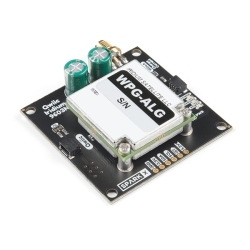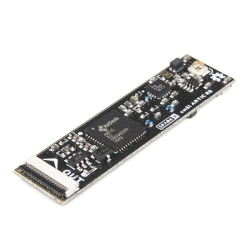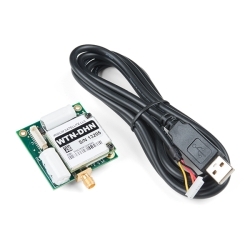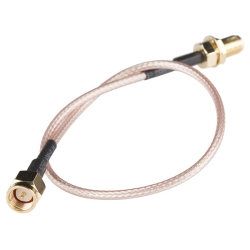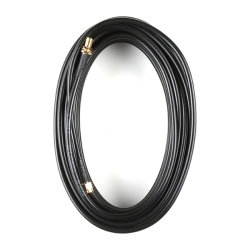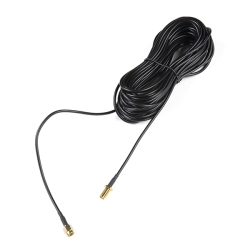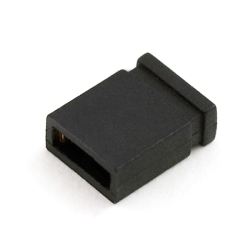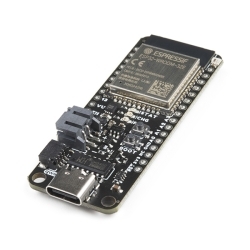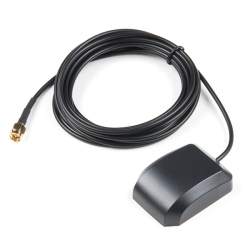SparkFun Satellite Transceiver Kit - Swarm M138
With a clear view of the sky, the Satellite Transceiver Breakout - Swarm M138 allows you to send and receive short messages.
Product Overview
Looking for a low-cost way to send and receive data messages via satellite? This is it! With a clear view of the sky, the SparkFun Swarm M138 Satellite Transceiver Kit allows you to send and receive short messages at will. This kit works almost anywhere in the world, including the polar regions, far beyond the reach of WiFi and Cellular networks. It is perfect for a variety of low-bandwidth use cases: from connecting people and tracking vehicles, ships, or packages to relaying sensor data for agriculture, energy, and industrial IoT applications. The built-in GNSS receiver in this Satellite Transceiver Kit makes it perfect for many tracking applications thanks to Swarm's satellite network.
At the heart of this kit is a Swarm M138 satellite modem, a Mini-PCI Express Card containing both the satellite modem and a very capable GNSS receiver, all in one integrated package! It can operate from a wide range of supply voltages: 3.0V Min; 5.0V Max. Its standard 3.3V CMOS serial UART interface and NMEA-style command set make it easy to integrate into your project. Our board includes both a USB-C interface (for power and/or serial data) and a full set of breakout pins.
The modem has two u.FL antenna connections on it, one marked "VHF" (for the Very High Frequency signal used to communicate with the Swarm satellites) and a separate one for satellite navigation (marked "GPS"). You can, if you wish, connect the provided antennas directly to the u.FL connectors on the modem. Or, you can use the provided 25mm u.FL cables to connect the modem to the robust SMA connections on the Breakout.
The Swarm antenna is a purpose-designed coiled quarter-wave antenna tuned to the Swarm satellite frequencies. It does require a ground plane and so we've included one of those in the box too! It comes with mounting holes to allow it to be secured to (e.g.): 2in. or 1.5in. antenna pole, a camera tripod, or a handrail.
The current list of approved countries / regions for the M138 Modem is:
USA,
Antarctica,
Australia,
Austria,
Brazil,
Canada,
Colombia,
Denmark,
Georgia,
Germany,
Greenland,
Iceland,
Ireland,
New Zealand,
Netherlands,
Spain,
Sweden,
United Kingdom
and International Waters (12 nautical miles offshore).
Swarm continues to grow this list of approved countries as quickly as possible. Customers will receive regular updates on approved regions through the Swarm newsletter.
Includes:
- Swarm M138 Modem
- SparkFun Satellite Transceiver Breakout
- Swarm VHF Antenna
- u.FL - SMA Adapter
- SparkFun Antenna Ground Plane (PCB, 8" x 8")
- Molex adhesive GNSS Antenna (u.FL)
- 2x u.FL to u.FL cables
- 2x M2.5 Screws
Features & Specs
- PCB Dimensions (with modem attached):
- 3.5" x 1.4" x 0.37" (89 x 36 x 9.5mm)
- SMA Connections:
- Separate, robust connectors for VHF satellite communication and GPS / GNSS positioning
- Serial Interface:
- USB-C via a CH340E USB-serial converter
- 3.3V UART via 0.1" breakout pins
- Split pads allow the TX and RX breakout pins to be isolated from the CH340E
- TX and RX LEDs (configurable)
- Power Supply:
- 3.0V (Min)
- 5.0V (Max)
- Power can be provided by USB-C or via 0.1" breakout pins
- "Ideal diode" power mux circuit with ~0V voltage drop
- Current Draw @ 3.3V:
- Sleep: Modem: 80µA (Peak); Power Mux: ~70µA
- Receive: 26mA (Typ.); 40mA (Peak)
- Transmit: 850mA (Typ.); 1000mA (Peak)
- Current Draw @ 5.0V:
- Sleep: Modem: 110µA (Peak); Power Mux: ~100µA
- Receive: 25mA (Typ.); 45mA (Peak)
- Transmit: 550mA (Typ.); 600mA (Peak)
- Please note:
- When powering the board from USB, please use a USB-C or USB 3 port
- USB 2.0 is not supported
Documentation
Customer Reviews

Stock and Customer Discounts
Available Discounts
- $189.95 | 10+ units
- $179.96 | 25+ units
- $169.96 | 100+ units



